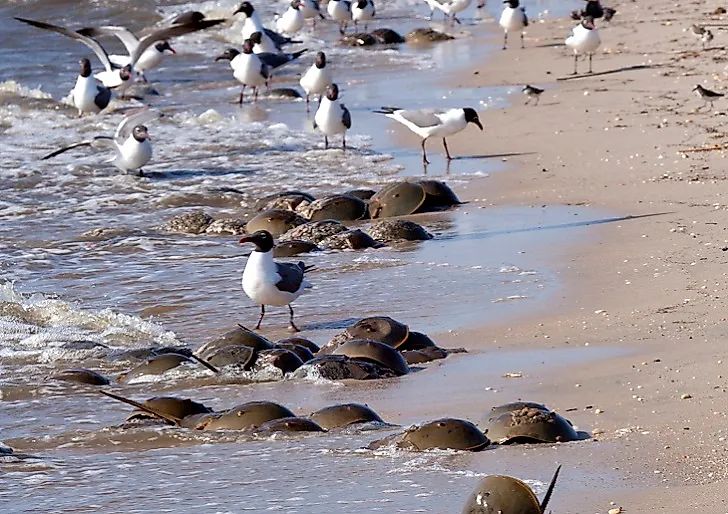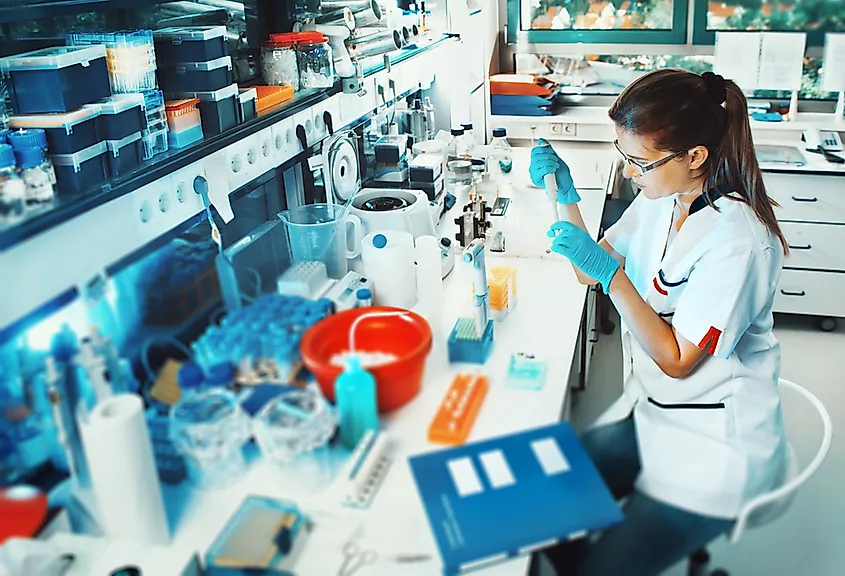
How Horseshoe Crabs Guard Our Vaccines
How Horseshoe Crabs Guard Our Vaccines
Did you ever wonder how scientists ensure that vaccines are safe before they reach your arm? The answer involves not just high-tech laboratories or modern machines but also a 450-million-year-old marine creature with blue blood: the horseshoe crab. Although it resembles a prehistoric relic, this ancient arthropod plays a vital role in protecting human health. Its blood contains a compound so sensitive to bacterial contamination that pharmaceutical companies use it to screen every single batch of injectable medication, including vaccines. In a time when global vaccine distribution remains critical, the contribution of the horseshoe crab remains both scientifically essential and ethically complex. What makes this species’ blood so unique, and how long can we continue to rely on it?
The Atlantic horseshoe crab (Limulus polyphemus) has walked the ocean floor for approximately 450 million years, predating dinosaurs by hundreds of millions. Despite its name, it is more closely related to spiders and scorpions than to true crabs. Its hard carapace, spiked tail, and multiple pairs of eyes give it a distinct prehistoric appearance. Found along the eastern coast of North America, it lives in shallow waters and migrates to shorelines during the spawning season. While its ecological role supports shorebird populations and marine ecosystems, it is the horseshoe crab’s copper-based blue blood that has drawn the attention of biomedical science.

Horseshoe crab blood is unlike that of any other animal used in medicine. Instead of iron, it contains copper, which gives it a distinctive blue color. More importantly, the blood contains specialized immune cells called amebocytes. These cells release a clotting agent when they come into contact with endotoxins, which are toxic substances found in the outer membrane of certain bacteria. The clotting reaction is immediate and visible, forming a gel-like substance that effectively isolates the threat. Scientists extract this compound to create Limulus Amebocyte Lysate (LAL), a testing agent capable of detecting minute amounts of bacterial contamination. LAL is so sensitive that it can identify endotoxins in concentrations as low as 0.01 nanograms per milliliter. Unlike traditional culture methods that may take days, LAL testing provides results in under an hour. Its speed and reliability have made it the gold standard for testing the sterility of vaccines, IV drugs, and implantable medical devices.
Before any vaccine can be approved for human use, it must undergo rigorous testing to ensure it is free from bacterial contamination. One of the final and most critical steps in this process is the LAL test. Pharmaceutical companies use LAL to screen every batch of injectable vaccines, including those for influenza, COVID-19, and hepatitis. Even trace amounts of endotoxins can cause fever, septic shock, or death if introduced into the bloodstream. The LAL test serves as a fast, accurate, and cost-effective safeguard. Unlike animal-based testing methods once used for sterility assurance, LAL requires no live subjects beyond the initial blood extraction from horseshoe crabs. Its consistency and sensitivity make it a mandatory component of quality control for the United States Food and Drug Administration (FDA) and regulatory agencies worldwide. Without this test, modern medicine would risk exposing patients to undetected contaminants. In this sense, the immune response of a marine invertebrate has become an essential tool in protecting human lives.
While LAL testing is vital to public health, it raises ethical concerns about the impact on horseshoe crab populations. To obtain their blood, biomedical companies collect wild crabs, extract up to 30% of their blood, and return them to the ocean. Although many survive, some die from stress or injury, and females often fail to spawn afterward. These losses may threaten coastal ecosystems, especially migratory shorebirds that rely on horseshoe crab eggs. Conservationists have called for tighter regulations and monitoring of bleeding practices. In response, some laboratories have improved handling protocols, while several states have imposed harvesting limits. However, sustainable solutions remain uncertain as demand for LAL continues to rise.

In recent years, scientists have developed a synthetic alternative to LAL called recombinant Factor C (rFC). This lab-grown protein replicates the horseshoe crab’s clotting response without requiring any animal input. Studies have shown that rFC matches LAL in sensitivity and accuracy, and it has received regulatory approval in Europe and parts of Asia. However, adoption in the United States has been slow, and pharmaceutical companies remain hesitant to shift production processes already built around LAL. Wider acceptance of rFC could eventually reduce dependence on wild horseshoe crabs, but for now, their blood remains irreplaceable in global vaccine safety.
Who knew a 450-million-year-old creature would play a crucial role in safeguarding modern medicine? The horseshoe crab, often overlooked on the shoreline, has become an invisible ally in the fight against bacterial contamination. Its blue blood powers one of the most sensitive diagnostic tools available, ensuring the safety of vaccines, IV drugs, and surgical implants. As science advances, synthetic alternatives like recombinant Factor C may eventually reduce our reliance on this ancient species. Until then, the immune system of Limulus polyphemus continues to protect millions of lives, reminding us that even the most unassuming organisms can shape the future of human health.











